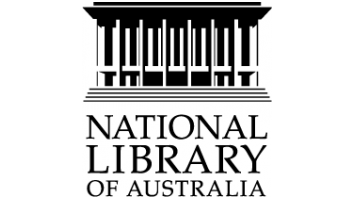National Library of Australia

The National Library of Australia is the largest reference library of Australia, responsible under the terms of the National Library Act for "maintaining and developing a national collection of library material, including a comprehensive collection of library material relating to Australia and the Australian people."
Collections
In 2012–2013 the Library collection comprised 6,496,772 items, with an estimated additional 2,325,900 items held in the manuscripts collection.
The Library's collections of Australiana have developed into the nation's single most important resource of materials recording the Australian cultural heritage. Australian writers, editors and illustrators are actively sought and well represented—whether published in Australia or overseas.
The Library's collection includes all formats of material, from books, journals, websites and manuscripts to pictures, photographs, maps, music, oral history recordings, manuscript papers and ephemera.
The Library has digitized over 174,000 items from its collection and, where possible, delivers these directly across the Internet. The Library is a world leader in digital preservation techniques, and maintains an Internet-accessible archive of selected Australian websites called the Pandora Archive.
Australian & General Collection
The Library collects material produced by Australians, for Australians or about the Australian experience in all formats—not just printed works—books, serials, newspapers, maps, posters, music and printed ephemera—but also online publications and unpublished material such as manuscripts, pictures and oral histories. The Library has particular collection strengths in the performing arts, including dance.
The Library's considerable collections of general overseas and rare book materials, as well as world-class Asian and Pacific collections which augment the Australiana collections. The print collections are further supported by extensive microform holdings.
The Library also maintains the National Reserve Braille Collection.
Asian Collections
The Library houses the largest and most actively developing research resource on Asia in Australia, and the largest Asian language collections in the Southern hemisphere, with over half a million volumes in the collection, as well as extensive online and electronic resources. The Library collects resources about all Asian countries in Western languages extensively, and resources in the following Asian languages: Burmese, Chinese, Persian, Indonesian, Japanese, Khmer, Korean, Lao, Manchu, Mongolian, Thai, Timorese, and Vietnamese.
Pictures and manuscripts
The National Library holds an extensive collection of pictures and manuscripts. The manuscript collection contains about 26 million separate items, covering in excess of 10,492 meters of shelf space (ACA Australian Archival Statistics, 1998). The collection relates predominantly to Australia, but there are also important holdings relating to Papua New Guinea, New Zealand and the Pacific. The collection also holds a number of European and Asian manuscript collections or single items have been received as part of formed book collections.
The Australian manuscript collections date from the period of maritime exploration and settlement in the 18th century until the present, with the greatest area of strength dating from the 1890s onwards. The collection includes a large number of outstanding single items, such as the 14th century Chertsey Cartulary, the journal of James Cook on the HM Bark Endeavour, inscribed on the Memory of the World Register in 2001, the diaries of Robert O'Hara Burke and William John Wills from the Burke and Wills expedition, and Charles Kingsford Smith's and Charles Ulm's log of the Southern Cross.
A wide range of individuals and families are represented in the collection, with special strength in the fields of politics, public administration, diplomacy, theatre, art, literature, the pastoral industry and religion. Examples are the papers of Alfred Deakin, Sir John Latham, Sir Keith Murdoch, Sir Hans Heysen, Sir John Monash, Vance Palmer and Nettie Palmer, A.D. Hope, Manning Clark, David Williamson, W. M. Hughes, Sir Robert Menzies, Sir William McMahon, Lord Casey, Geoffrey Dutton, Peter Sculthorpe, Daisy Bates, Jessie Street, and Eddie Mabo and James Cook both of whose papers were inscribed on UNESCO's Memory of the World Programme Register in 2001.
The Library has also acquired the records of many national non-governmental organisations. They include the records of the Federal Secretariats of the Liberal party, the A.L.P, the Democrats, the R.S.L., the Australian Inland Mission, the Australian Union of Students, The Australian Ballet, the Australian Elizabethan Theatre Trust, the Australian Institute of Urban Studies, Australian Industries Protection League, the Australian Conservation Foundation, and the Australian Council of National Trusts. Finally, the Library holds about 37,000 reels of microfilm of manuscripts and archival records, mostly acquired overseas and predominantly of Australian and Pacific interest.
The National Library's Pictures collection focuses on Australian people, places and events, from European exploration of the South Pacific to contemporary events. Art works and photographs are acquired primarily for their informational value, and for their importance as historical documents.
Media represented in the collection include photographs, drawings, watercolours, oils, lithographs, engravings, etchings and sculpture/busts.